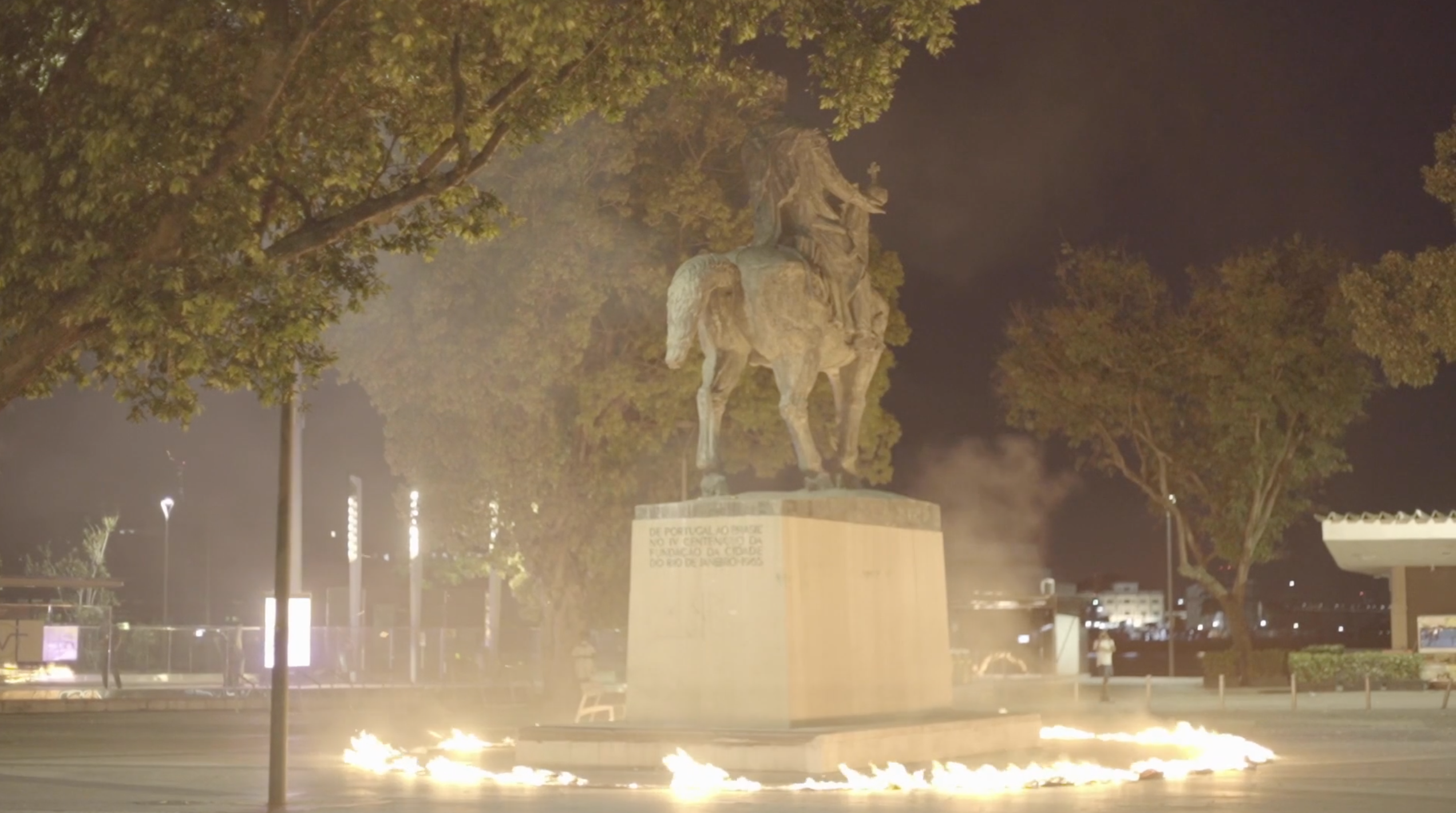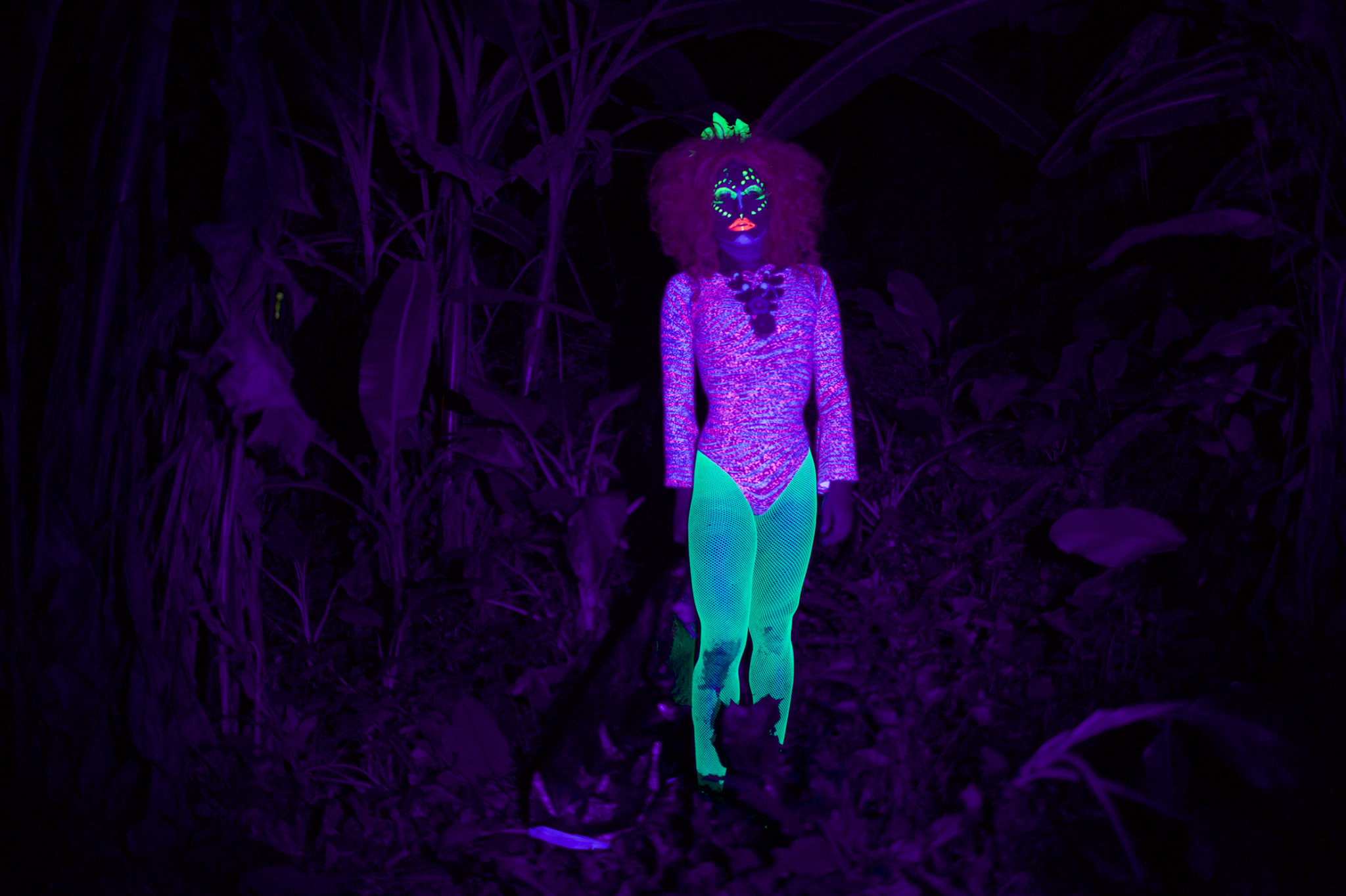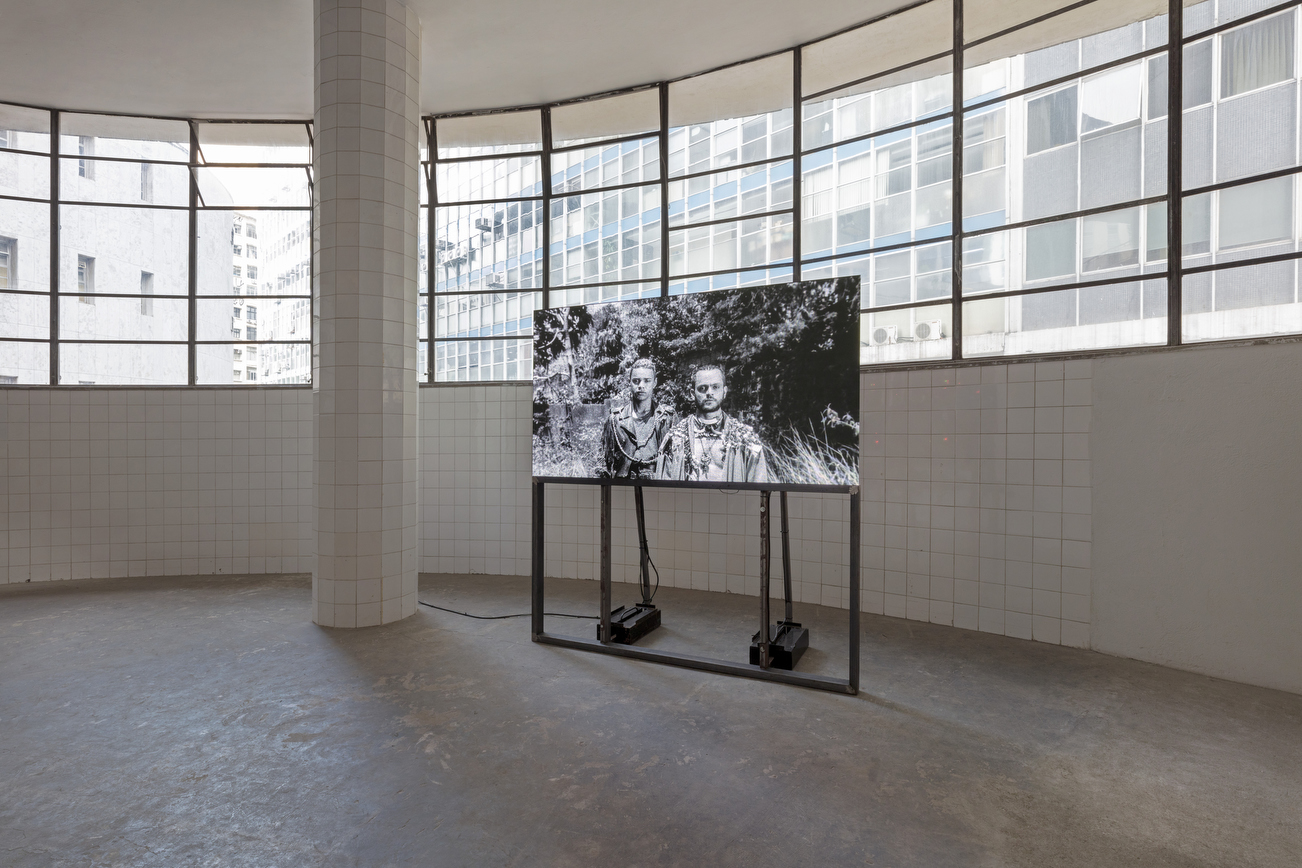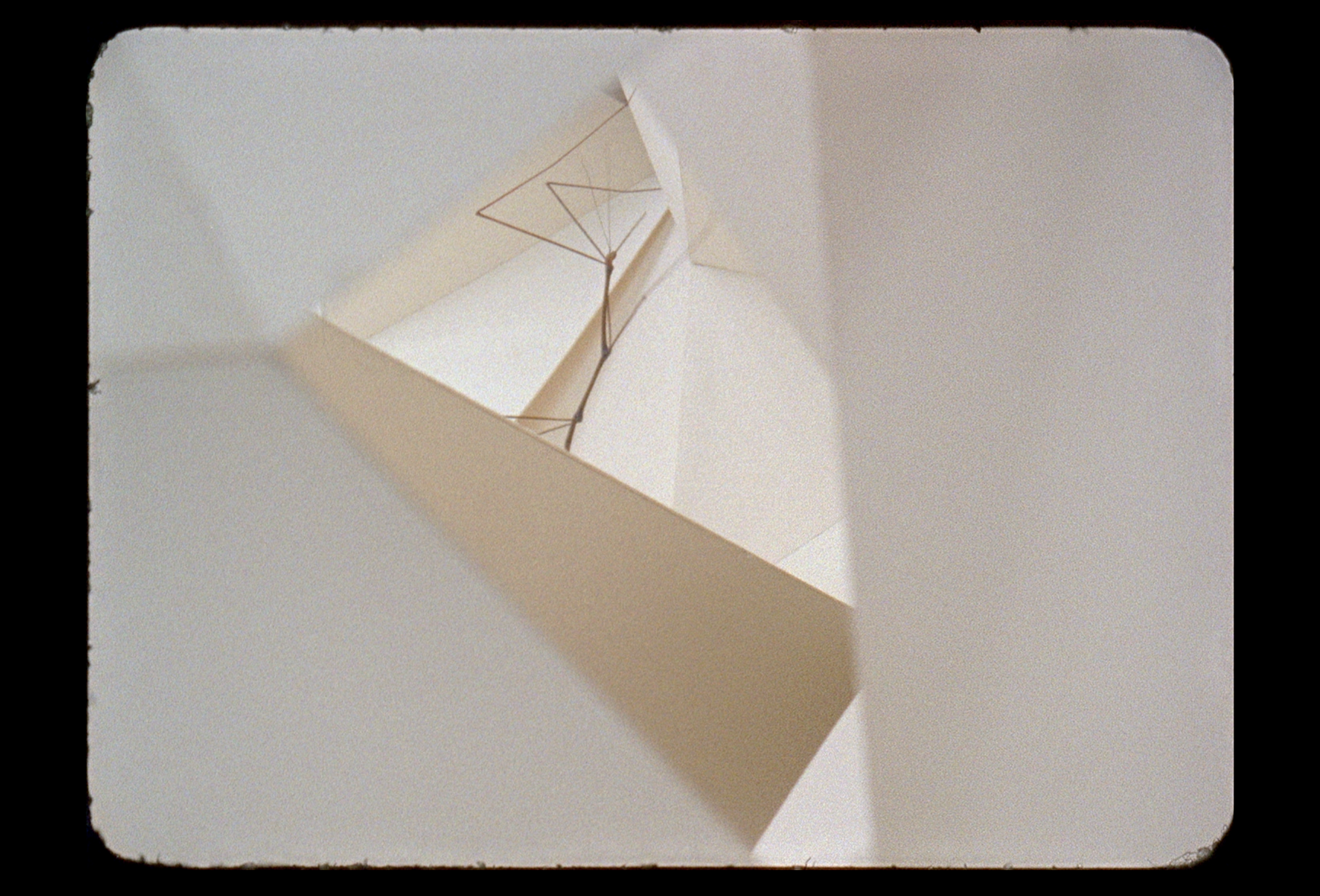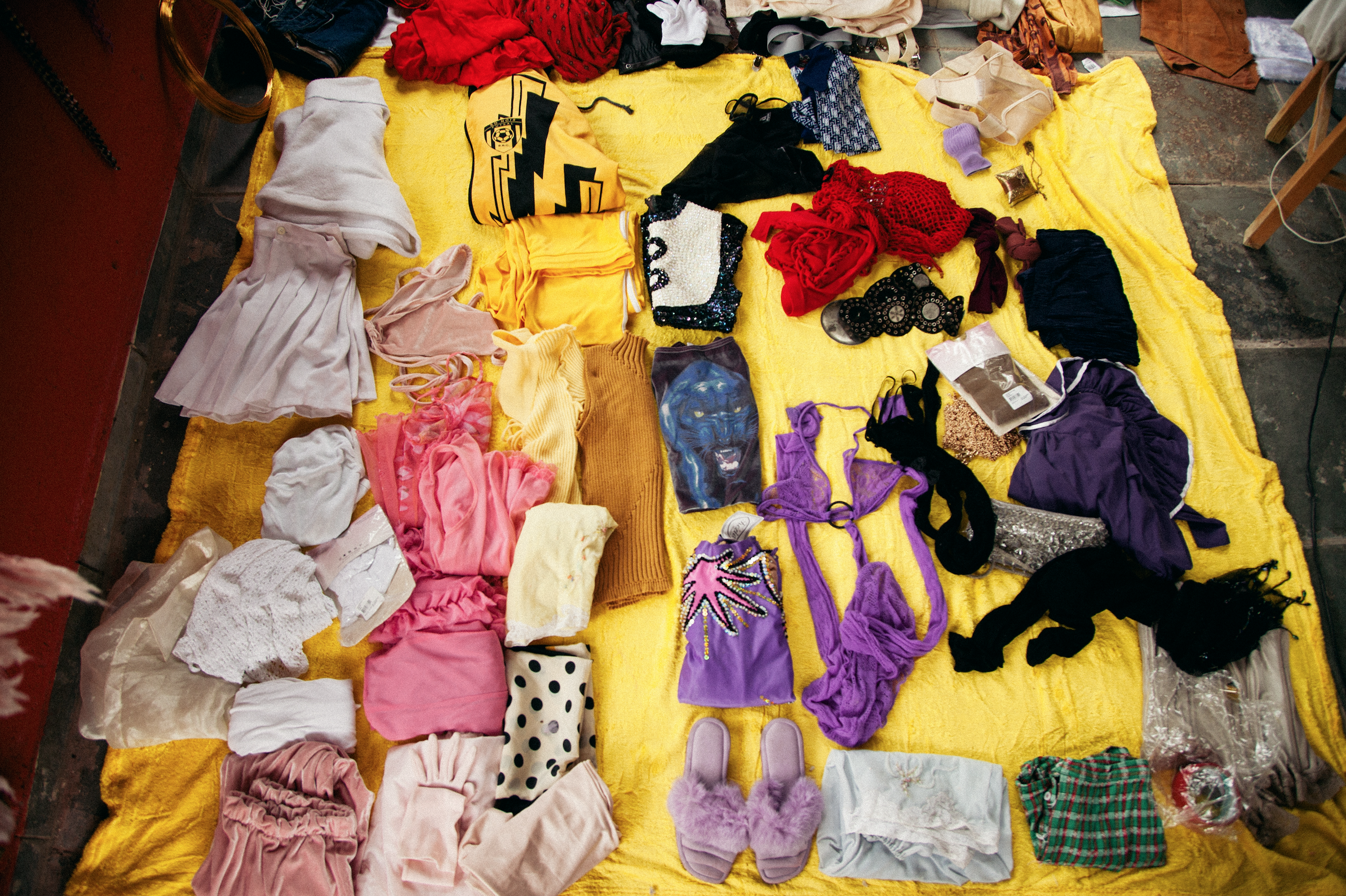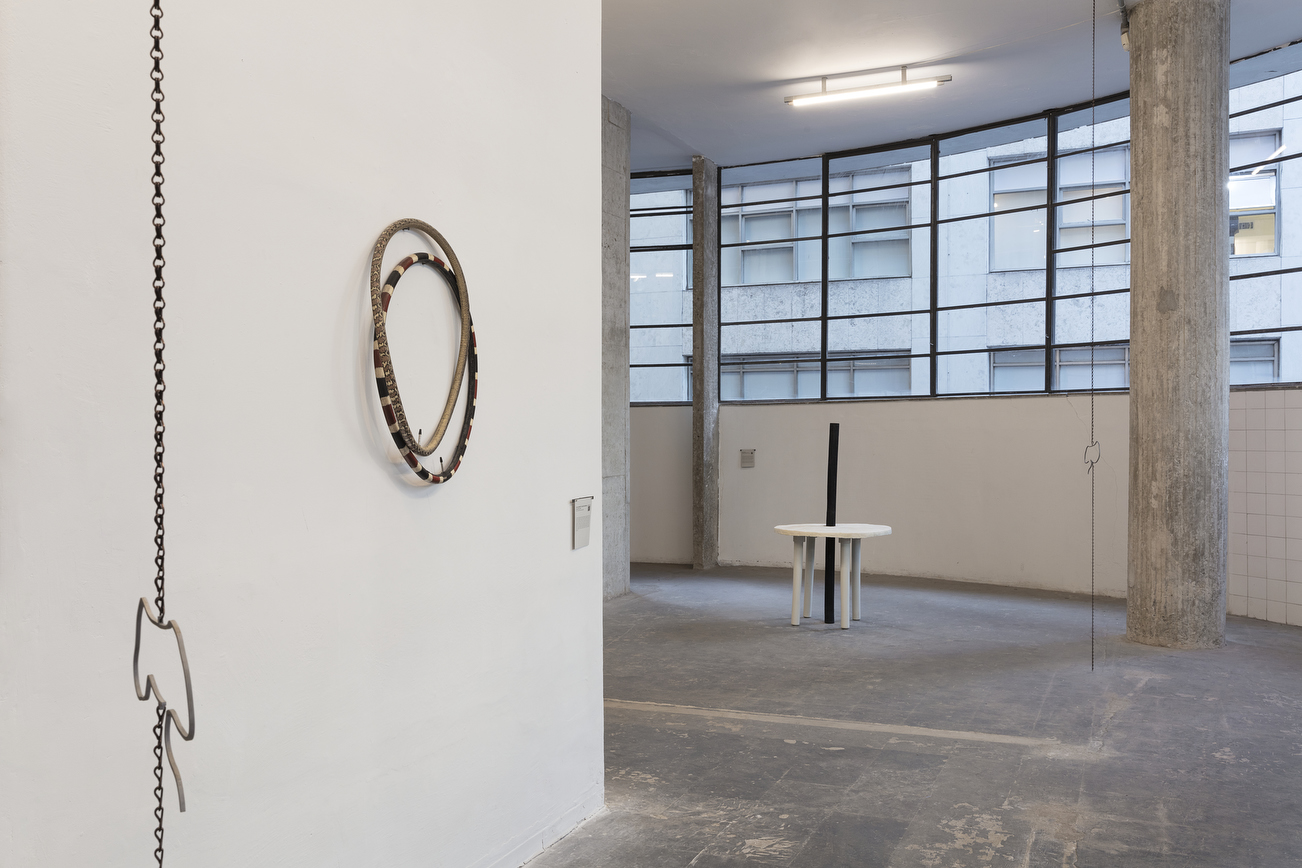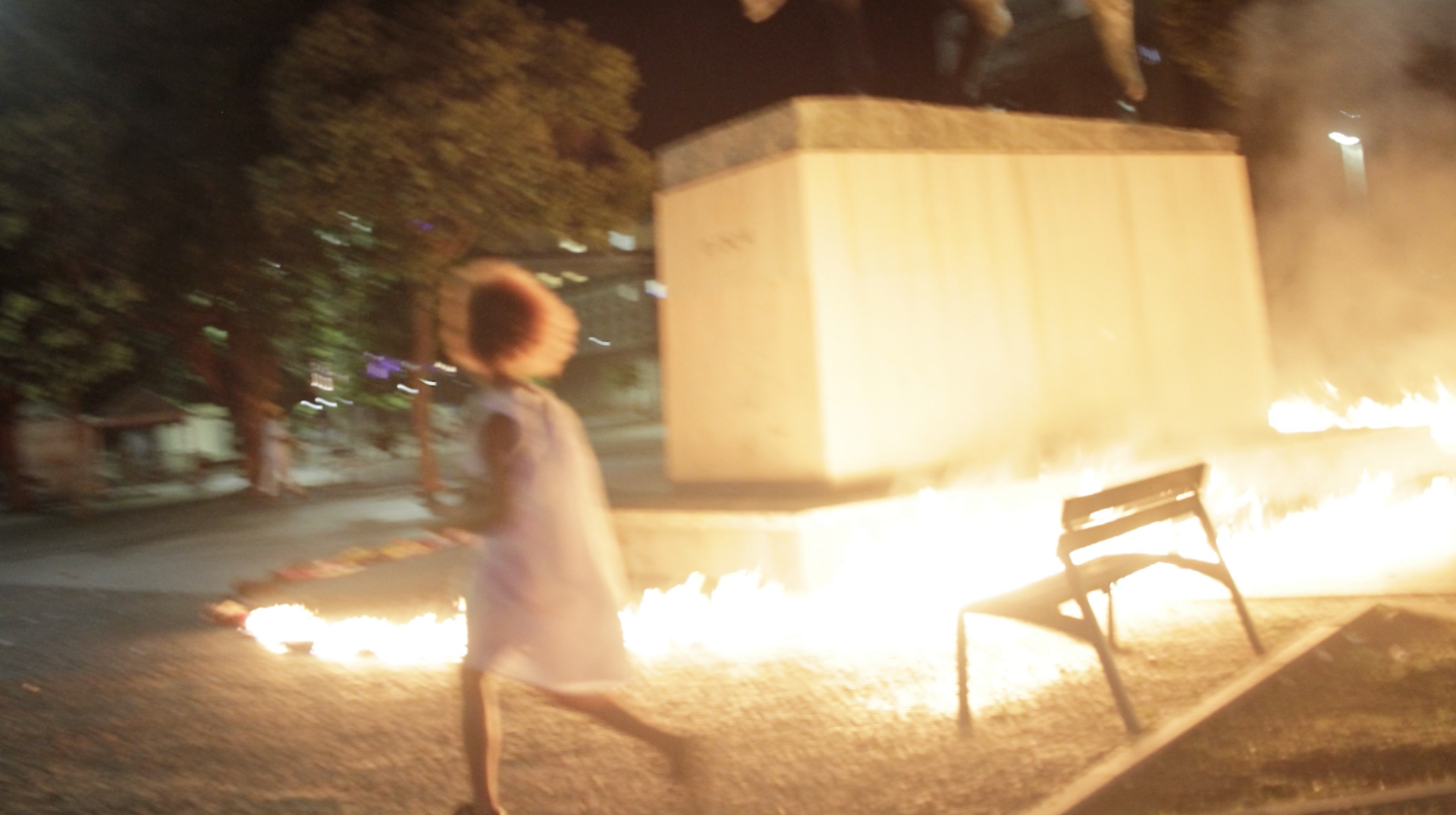

Taking choreography and collective construction as strategies to move freely across different environments, Diambe da Silva opens possibilities for experiences through the repetition of intentional gestures, accepting errors and accidents, while creating new situations for the interaction of bodies in space. Her proposal for Pivô Satellite presented two new videos on the digital platform, as part of the project O Assombro dos Trópicos [The Haunting of the Tropics], curated by Victor Gorgulho.
Leo Felipe: Your use of the concept of choreography is quite peculiar. It is there that you anchor your thought process about the transit between the artistic production, collective collaboration and public action spheres. The concept also serves as a kind of alibi, offering legal grounding for the interventions of the Devolta series. Could you comment on this approach and its ramifications?
Diambe da Silva: Choreography has turned into a codename that I have been using to talk about some processes involving living beings, whether with people, roots, root vegetables, monuments, teachers, art critics, police officers; between the world of art and the world of society. When I recognized it as choreography, I was able to navigate more closely alongside the movements of spontaneous people, who walk on the street along with their marked steps and sometimes deviating from them. In the situations that I’ve called choreographic, I deal with intentions, repetitions, signs, times, and I leave them open to different incorporations. When I talk about choreography, I’m talking about the instructions, but mainly about unexpected actions. In that sense, I am not a choreographer, but I am also a choreographer because I have seen in it a strategy to open up places and enable actions that go against powerful instructions.
How does my choreography work? It starts long before the beginning and ends well after the end; in the case of contravention on the street, such as Devolta, I spend some time, weeks, observing the part of the world where it will take place. It depends a lot on who I invite to participate, on whether I am/we are tired or rested at the time and whether or not I/we can access the space. At the time of the event, it is common for people to ask if we are going to perform religious work in the space, because of our clothes, as is common for the police to appear in the final moments, to perform coloniality while defending a symbolic monument. Symbolic monuments act in reality. Sometimes, at the same place, viewers debate whether what they see is art or vandalism, sometimes they record, sometimes they denounce, and talk about the work. The choreography, in the specific case of Devolta, ends up awakening colonial actions that were already there by the statues, by the rounds of the military police and by some of the people. But it starts at breakfast, or even weeks before, it takes place in the crossing of the city and in the meeting in certain places and it only ends if everyone is safely back at home.
I understood, through a municipal law, that choreography is like a key that differentiates my work from what is meant by “terrorism”, “alterity”, or “relational art”; it is also an alibi for redistribution of fire. I, being free, intend to be me = you. But to assume that we are equal, I always see it as important to assume ≠: my body is subject to violence and policing on the streets and this has to do with historically choreographed steps. And I like to retell stories that have been told wrong to me. Other works dealing with choreography are the Mucosas, beings made of roots that after a while began to sprout and dance by themselves because they were alive. They were edible roots; some rot, others sprout. Usually, the choreographies that I create a deal with living things and reciprocities.
LF: One of the many elements not apparent in the Devolta choreography is the T-shirt you usually wear during the actions, in which we read the manifesto Ñ serei bicha presa por arte [I will not be a gay person imprisoned for art]. Is this piece of clothing a talisman of sorts, used for self-protection? How has your confrontation with the public authorities been during the interventions?
DS: In the case of Devolta, every time the police show up to perform is at the end. I make notes of the police patrol times a few weeks earlier. The police in Rio de Janeiro are very violent and bloodthirsty, especially in the outskirts, which is where most of us live, especially with black and non-white people, who are also the majority. Because of the actions involving monuments, I was actually taken to the police station when we made the ring of fire around Isabel, in Copacabana, and the approach was truculent. At the police station I went to talk to the chief of police, and I told him calmly that what I was doing was a choreography (I did not say performance), and the police had to accept that our actions were in accordance with Law 5,429 of the municipality of Rio de Janeiro, which I take with me, and that states that dances and other street arts can be performed in public spaces. That is why I always wear, under my clothes, the T-shirt Ñ serei bicha presa por arte, and under it, I carry two sheets of paper with this street artists’ law; they are other skins that I carry with me in this dance. Not all of them are exposed and I am not on display to expose my body’s vulnerabilities; at the police station, we were still dancing.
The municipal law of Rio de Janeiro regulates some artistic expressions within limits that are useful to me. I haven’t carried this research in São Paulo yet. I must always remind myself that my body occupies, also within these city limits, places in society and places in the violent field of the arts. There I was asked if I was part of a political group and I said that I was a “representative of an artistic collective of one person, named Diambe da Silva”. I remind you that Rafael Braga was arrested with the cleaning product Pinho Sol in his backpack [1]. What would I, an effeminate black gay man, do with ten liters of gasoline in my backpack? I will not say that it is politics. When I’m making abstract art, I’m also making political art. In that sense, when I make political art, I can say that it is abstract art, dance. I did not prevent anyone from passing through or causing damage to any assets, but I created an image. I know art, I know it’s not always nice. In particular, I hope that at some point the monuments will be stored in the reserve collections of museums with their marks and wounds.
LF: In Einstein Remix you performed a choreographic experiment adapted to the pandemic context, in which the collaborative action, which usually takes place in the public space, is transferred to the digital and private environment of each person. How did you come up with the idea of “rereading” Ricardo Aleixo’s poem?
DS: I had been reading this poem by Ricardo Aleixo to some people, and one day, instead of reading it, I just showed it and asked someone else to read it to me. She spent some time putting the pieces together because it is a visual poem that organizes words in a different way. It looks like a game of chess or a dance floor, like those checkered ones. Until she found out the code to put the pieces together, I listened with curiosity to a lot of snippets of sound being brought together. I still thought that the poem was what I read, but then I understood that it was also the part where I had not yet understood it. I already knew that Ricardo was an incredible visual artist, and I had already read his book Pesado demais para a ventania, but at that time the poem appeared to me as if it were new. That was when this situation started, amid our confinements in 2020, whenever I felt like talking to someone.
We know that epidemics can last for decades and interfere with all our schemes of feeling, desires for healing, physical, mental, bodily possibilities. We as a world have already experienced other infections, and we do not know how these situations will be resolved in the end. So, I started proposing to people I know: “will you read me a poem?” – always the same poem -, we would start the video call and chat and then I would listen. It had to be the first time that the person saw this poem and so it was always different, and me listening to a whole new poem. ER emerged from this routine, but the video shows only the poem, a remix. There are secrets that were left out. I thought about carrying it out in the physical space. When I received the invitation from Pivô Satellite, the work was there, now in the virtual space, as if it were a choir, of people all talking together, having the same information and processing it in different ways. This is how I have been shaping my understanding of life: life carries information, metabolizes problems and seeks to stay alive, self-multiplying and even using war technologies such as the internet.

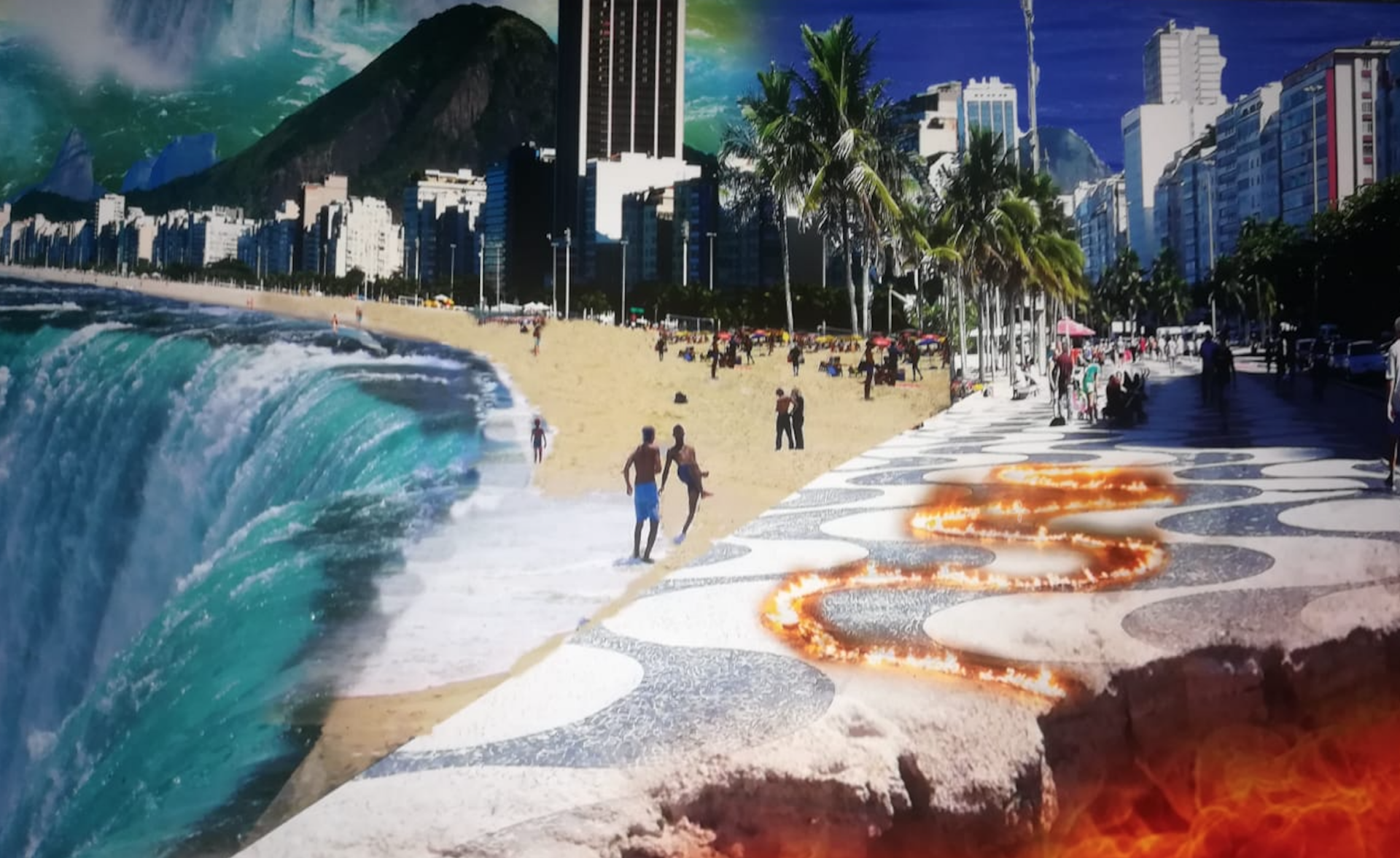
LF: In spite of all the adversities, Rio de Janeiro has been witnessing a thriving art scene. Some of the agents of this new scene participate as collaborators [comparsas] in your propositions. I would like you to comment on this collaboration process, which, I presume, is a two-way road.
DS: Depending on who you are and where you come from, it is not safe for you to go alone, either to a police station or to an art space. I have comparsas, they are not many or few, and I am a person who needs time to create intimacy, but I think we are interdependent when we perform intimacy rites. Even when I make individual works (painting, engraving, sewing, sculpture), I am not the only force at play in that field or on that surface. When I talk about comparsas, who/what do I mean? Those with whom we collaborate to escape from marked steps; what I mean is that we work differently from what happens with money and other resources that are finite. There are other values that bring us together. Several of the people I call comparsas later invite me to collaborate on their work and I’m with them too. The other day two comparsas, Mayara Velozo and Thais Iroko, invited me to collaborate with a gif for Galpão Bela Maré, in an incredible process that took place in the Salgueiro court, for example. And then we get together again.
Another example is when I made a drawing of fire following the modernist lines of the Copacabana sidewalk. I wanted to make this action visible as antibodies of modernism, a drawing of fire that is different from the monuments of the monarchs, but which is reflected in them. It involves risk, it’s a postcard, it’s far from my home. I invited Guerreiro do Divino Amor to participate and he went. Shortly afterwards he asked me if he could incorporate Atlântica drawings into his SuperFicções, and I agreed. When I saw the image he orchestrated on the panel, I recognized my work there, it was a feat. Guerreiro was present in my work and I was present in his. My comparsas are references for me and art is still a temporary codename to speak of much more abundant and everyday practices. Not everything that is nice is art, quite the contrary, but art is my livelihood today, can you believe me? Sometimes it is hard to believe, but it becomes more real when I realize that I am not alone.

 Português
Português